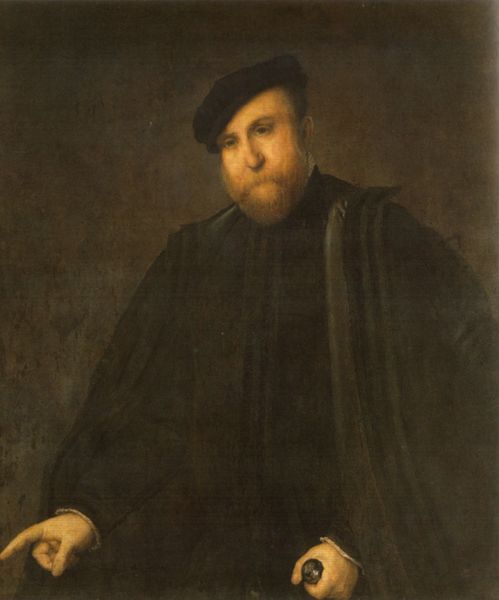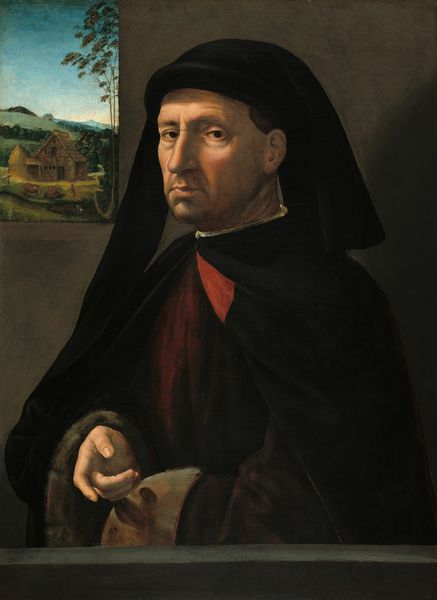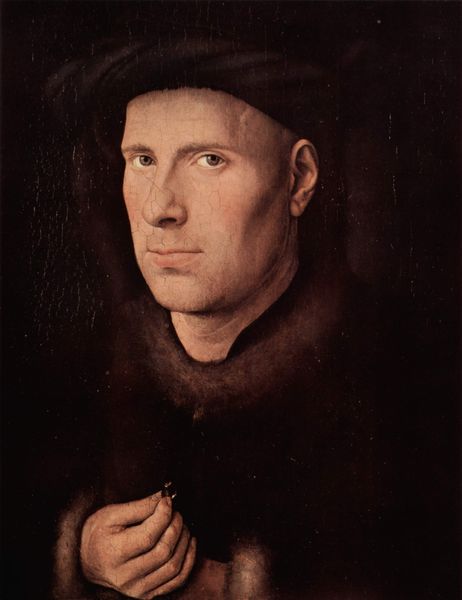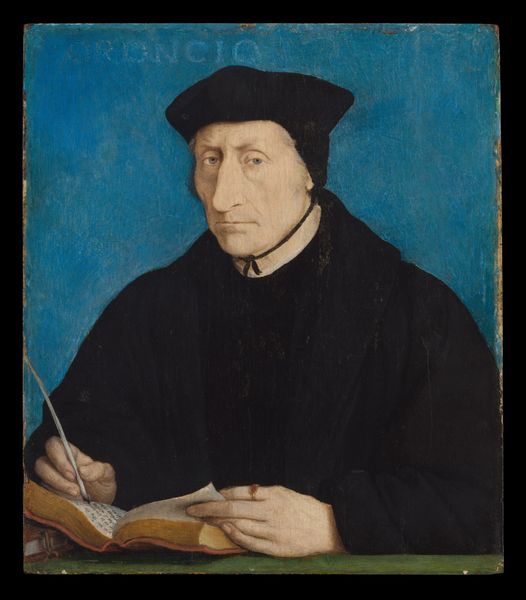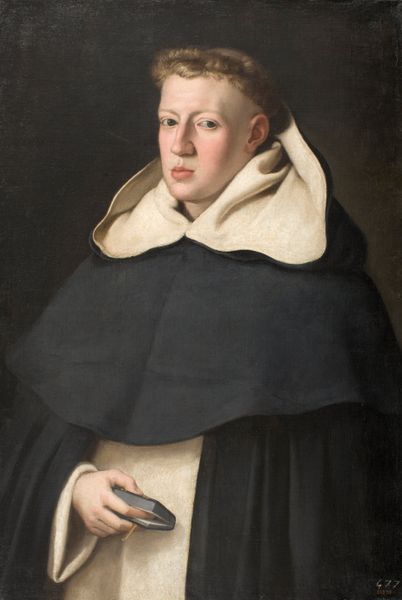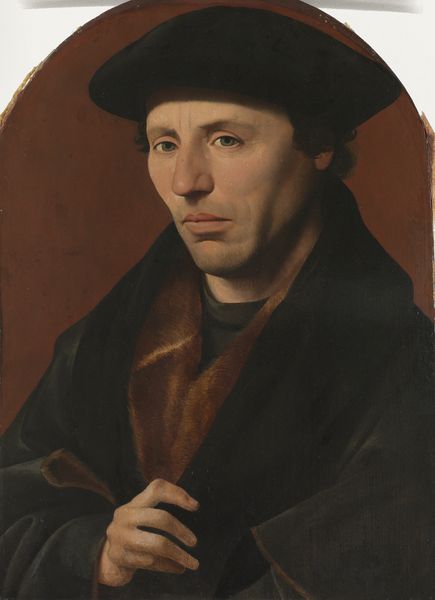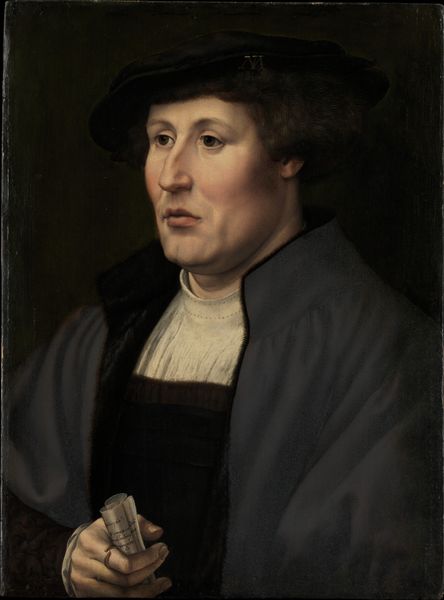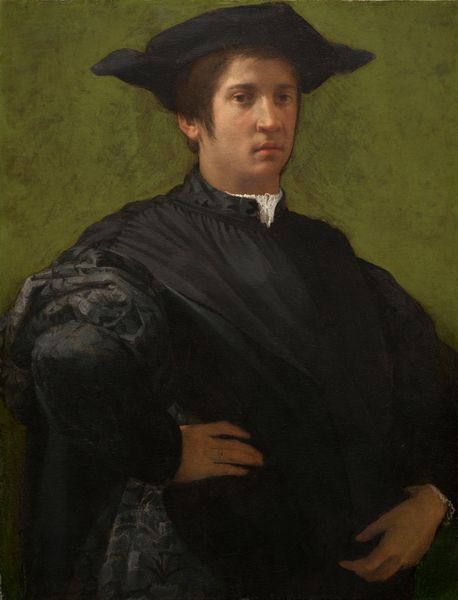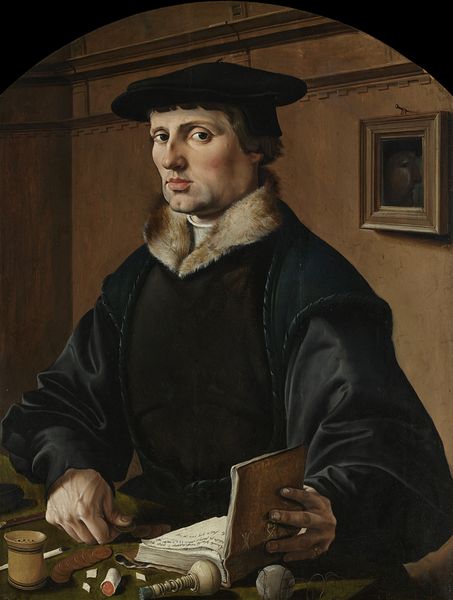
painting, oil-paint
#
portrait
#
self-portrait
#
portrait image
#
portrait
#
painting
#
oil-paint
#
mannerism
#
figuration
#
portrait reference
#
famous-people
#
male-portraits
#
portrait head and shoulder
#
portrait drawing
#
facial portrait
#
italian-renaissance
#
portrait art
#
fine art portrait
#
celebrity portrait
#
digital portrait
Copyright: Public domain
Curator: Here we have Jacopo Pontormo’s “Portrait of Alessandro de’ Medici,” an oil painting created around 1535. It's quite striking, wouldn't you say? Editor: Yes, initially I’m drawn to the subject’s somber gaze. There's an undeniable intensity. But I also notice how Pontormo has rendered the textures of the black fabrics - they’re rich, layered, almost palpable. One might even suggest the density of those fabrics is intended to convey the weight of power. Curator: Good point. I think the sitter’s apparel points to this. He seems to be sitting near an unfinished doorway or threshold. What does that architectural detail suggest to you, from your vantage point? Editor: Well, Alessandro was the Duke of Florence, appointed by Charles V. In his dark garb, he certainly appears like a figure commanding power, despite the somewhat unfinished background, one is reminded of his complex social position as a figure representing multiple forms of patronage, control, and influence. The clothing serves to announce wealth and position. I suppose it works well here; he appears deep in contemplation. Curator: Indeed. It's interesting to consider the social circumstances surrounding its commission. The portrait seems to allude to themes beyond Alessandro’s known identity and position. It makes me consider what meaning it attempts to relay about a leader still facing so much political and social contestation during that moment. Editor: It's hard not to see the visual cues signaling authority – the dark clothing being very obvious, yet its materiality feels so prominent here. Pontormo was surely aware of his patron's position and the social currents of that moment. Do you think this reflects the fraughtness of Medici power at that time? Curator: It seems entirely likely. How compelling that Pontormo has created a likeness of a man who might, through his physical bearing and adornment, signify power but does so against a background lacking full material closure or solidity. Editor: A lasting visual encapsulation of political life. I’m quite interested to see how his personal symbols develop over time in Florence, through its art. Curator: And I am compelled to consider its physical creation, the pigments and canvas selected, its presence in that society during that particular time and its resonances today. It continues to be a worthwhile source of inquiry.
Comments
No comments
Be the first to comment and join the conversation on the ultimate creative platform.
